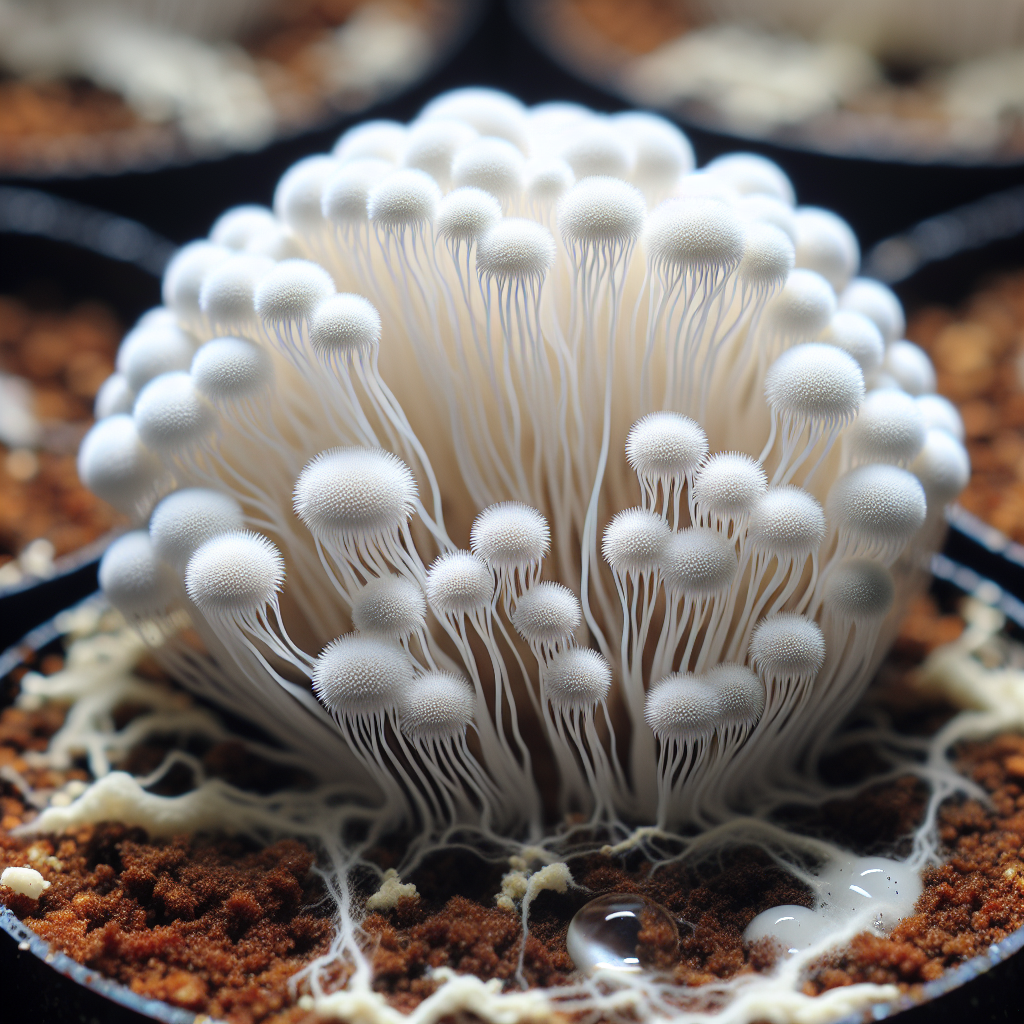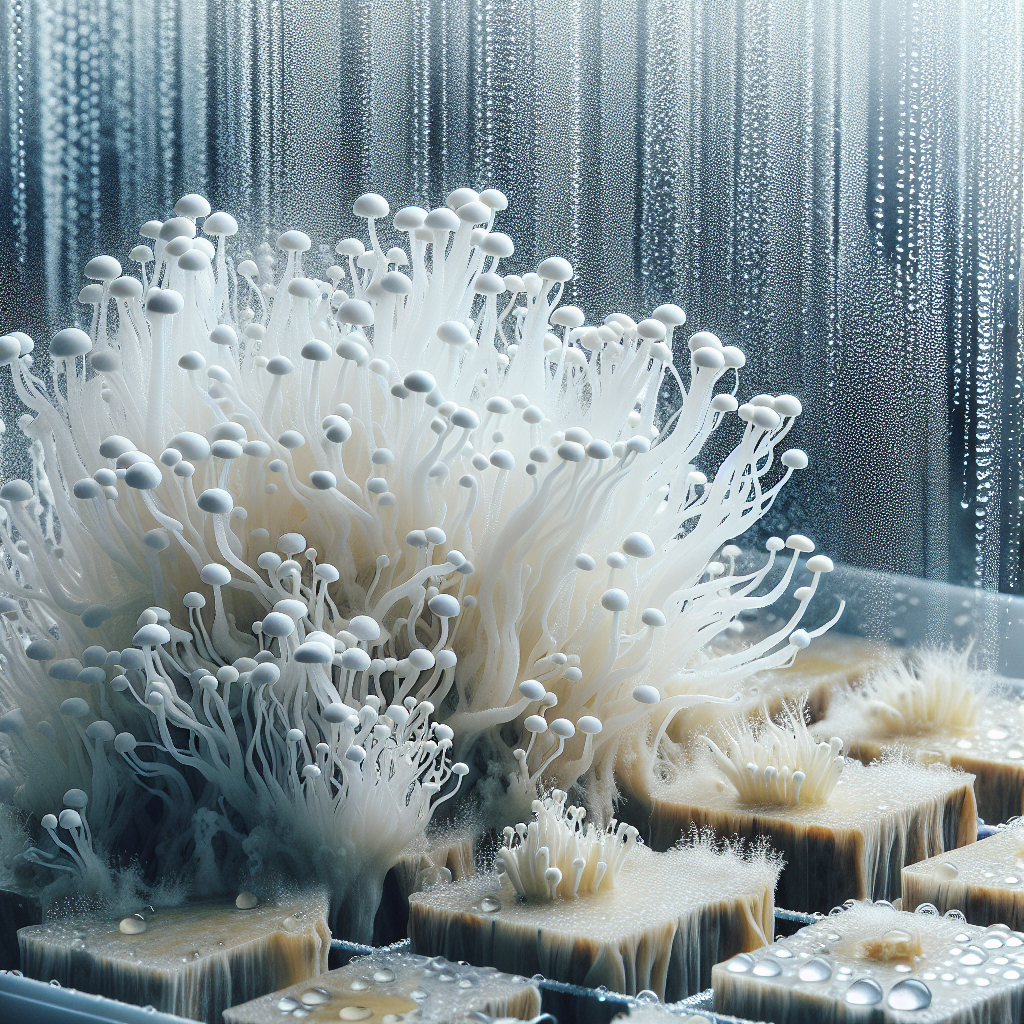In the comprehensive guide, “Understanding the Best Humidity for Mycelium Growth,” you will gain an in-depth comprehension of the essential conditions required for optimal mycelium development. The article takes you through how correct humidity levels significantly impact mycelium growth, setting you on the correct path towards successful mycelium cultivation. Proper understanding and application of this knowledge could undoubtedly revolutionize your endeavors in mushroom farming or mycology-oriented research.

Understanding Humidity’s Role in Mycelium Growth
The world of mycelium cultivation fascinates many, but it isn’t as simple as planting a seed and waiting for it to sprout. One critical factor in the process is humidity. This article provides a closer look at how humidity affects mycelium growth and explores techniques for managing these conditions effectively.
Definition of humidity
Humidity refers to the presence of water vapor in the atmosphere. It’s usually expressed as a percentage, representing the amount of moisture in the air relative to the maximum amount it can hold at a given temperature. High humidity indicates an abundance of water vapor, whereas low humidity means the air is dry.
How humidity affects mycelium growth
Humidity plays a crucial role in mycelium growth. Mycelium, the vegetative part of a fungus, requires a high moisture environment to thrive. The water vapor provides necessary hydration and supports the processes that allow the mycelium to grow and eventually produce mushrooms. However, it’s essential to manage humidity levels carefully, as both excessive and inadequate humidity can hinder growth or even lead to mycelium death.
Ideal Humidity Levels for Mycelium Growth
Understanding the ideal humidity conditions for mycelium growth is key to successful cultivation.
General ideal range
The ideal humidity for mycelium growth generally ranges from 80% to 90%. This range supports the growth process by providing sufficient moisture for hydration, thereby enabling nutrient absorption and fostering optimum conditions for mushroom production.
Certain strains and humidity preference
While the general range is suitable for most strains, keep in mind that specific strains of mycelium may have different humidity preferences. Some species might flourish at slightly lower or higher humidity levels than others. Researching and understanding the specific needs of the mycelium strain you’re cultivating is essential to achieving optimal growth.
Recognising signs of excessive or insufficient humidity
Excessive humidity can lead to waterlogged substrates, poor gas exchange, and mold growth. Signs of over-hydration include stunted growth, color changes, and cloudy, slimy caps on your mushrooms. On the other hand, insufficient humidity can dry out your mycelium, leading to pause or stop its growth. Symptoms of under-hydration include slow growth and small, dry, or cracked mushrooms.
Managing Humidity for Indoor Mycelium Cultivation
When cultivating mycelium indoors, managing humidity levels is paramount to achieving healthy growth.
Tools for measuring humidity
A hygrometer is a handy tool that measures the amount of water vapor in the air, providing a humidity level reading. Using a hygrometer ensures precise control and adjustment of humidity levels. Digital hygrometers are popular due to their ease of use and accuracy.
Types of humidifiers
There are several types of humidifiers to maintain the appropriate humidity levels, such as ultrasonic, evaporative, and impeller humidifiers. The best choice depends on your specific needs and circumstances, including the size of your cultivation area and your budget.
Routine humidification for mycelium health
Regularly monitoring and adjusting humidity levels is key to maintaining healthy mycelium growth. The routine will depend on the specific needs of your mycelium strain and the current stage of growth. Some stages require higher humidity levels than others.

The Danger of Over-humidification
Over-humidification can lead to undesirable results in mycelium cultivation.
Symptoms of over-humidification
The common symptoms of over-humidification include watery or slimy mushroom caps, a lack of growth, or stunted development. You may also notice a unpleasant smell due to the growth of bacteria or molds, which thrive in overly damp conditions.
How over-humidification affects mycelium health and productivity
When the humidity is too high, the mycelium has difficulty performing the gas exchange necessary for its growth. This can hinder the robust development of the mycelium and its subsequent mushroom production. Overly moist conditions also attract unwanted organisms like mold and bacteria, which can harm or destroy the mycelium.
Strategies to prevent and manage over-humidified environments
To prevent over-humidification, monitor your environment regularly with a hygrometer and adjust your humidifier settings as needed. In case of over-humidification, improving airflow can help reduce humidity levels. Also, thoroughly clean the cultivation area to eliminate any mold or bacteria that may have grown in the excessively damp conditions.
The Peril of Under-humidification
While high humidity can cause problems, so can low humidity.
Symptoms of under-humidification
Signs of insufficient humidity include slow or stunted growth, as well as mushrooms that are small, dry, or cracked. They may also appear wilted or shriveled.
How under-humidification affects mycelium health and productivity
Low humidity levels can cause the mycelium to dry out, impeding nutrient absorption and growth. This leads to a decline in the health and productivity of the mycelium. Additionally, dry conditions can make the mycelium more susceptible to airborne contaminants.
Strategies to prevent and manage under-humidified environments
Monitor humidity levels carefully using a hygrometer, and use a humidifier to increase humidity when necessary. Also, ensure there is not excessive ventilation or temperature that can decrease humidity. It’s important to maintain a consistent, high-humidity setting for optimal mushroom cultivation.
Optimizing Humidity for Different Stages of Mycelium Growth
The need for humidity can vary among the different stages of mycelium growth.
Comparing mycelium growth stages
There are two primary stages in mycelium growth: the colonizing stage and the fruiting stage. Each has unique humidity requirements.
Humidity needs of colonizing stage
During the colonizing stage, the mycelium is growing and spreading through the substrate. The necessary humidity levels during this period gravitate towards the higher end of the ideal range.
Humidity needs of fruiting stage
At the fruiting stage, when mushrooms begin to emerge, maintaining a slightly lower humidity level promotes healthier fruitbody development and decreases the risk of developing mold or bacteria.
Adjusting Humidity for Mycelium Strain Varieties
Not all mycelium strains have the same humidity requirements.
Understanding different mycelium strains
There’s a vast number of mycelium strains, each with distinct characteristics including growth rate, temperature preference, shape, and color. Such diversity also translates into varied humidity requirements.
How different strains react to humidity
Each mycelium strain reacts differently to humidity fluctuations. Some strains tolerate variations in humidity levels better than others. While some might need steady, high humidity, others may thrive with periodic decreases or fluctuating levels.
Temperature and humidity pairings for various strains
Temperature and humidity work together in influencing mycelium growth. Strains that favor cooler temperatures often require higher humidity, whereas those preferring warmer temperatures may need less humidity. Therefore, understanding how to pair temperature and humidity for individual strains helps optimize mycelium cultivation.
Humidity and Other Environmental Factors
Humidity does not act in isolation but interacts with other environmental factors to affect mycelium growth.
How temperature influences humidity
Temperature significantly impacts the capacity of the air to hold water vapor. As temperature increases, the air can hold more moisture, and vice versa. Therefore, maintaining an optimum temperature is crucial to regulate humidity in your growing environment.
Interaction between humidity and lighting
Lighting can also influence humidity levels. Intense lights can increase the temperature, reducing relative humidity. Therefore, balancing the light intensity and duration is essential to maintain appropriate humidity levels.
Effect of ventilation on humidity
Ventilation aids in gas exchange, crucial for mycelium growth. However, excessive ventilation can lead to moisture loss and lower humidity. Striking a balance between ventilation and humidity is vital to create optimal growing conditions.
Troubleshooting Humidity Issues
Detecting and addressing humidity issues promptly can remediate potential damage to your mycelium.
Common humidity-related issues
As discussed earlier, common issues related to humidity include over-humidification and under-humidification. Each brings its unique set of challenges, from stunted growth to contamination.
Methods of troubleshooting common issues
Troubleshooting begins with identifying the issue. Regular monitoring of the growing area can help detect any abnormalities. Hygrometers are particularly useful in detecting issues. Once identified, adjustments can be made, such as increasing or decreasing humidity, modifying ventilation, or changing lighting.
Long-term solutions
Prevention is the best long-term solution. Regular monitoring combined with prompt and appropriate corrections can help maintain ideal humidity. Ensure that all equipment including humidifiers and hygrometers are in good working order. Understanding the specific needs of your mycelium strain can also aid in preventing humidity-related issues.
The Role of Regular Monitoring in Maintaining Ideal Humidity
Ensuring the optimal growth of mycelium requires regular monitoring of humidity levels.
Importance of regular monitoring
Consistent monitoring allows for timely detection and correction of humidity fluctuations. Changes can occur quickly and can dramatically impact the health and productivity of your mycelium if not promptly addressed.
How to effectively monitor humidity
Using tools such as hygrometers allows you to monitor humidity accurately. Check readings regularly, ideally several times a day, and make necessary adjustments to maintain the ideal range.
Influence of monitoring in maximizing mycelium growth
Effective monitoring plays a crucial role in maximizing mycelium growth. Regular checks and timely corrections based on those findings help ensure your mycelium’s environment is consistently optimal. Meeting your mycelium’s specific humidity needs throughout the growth process is key to achieving a fruitful harvest.
In conclusion, understanding and managing humidity is paramount for successful mycelium cultivation. Regularly monitor your growing environment, make adjustments as necessary, and keep in mind the specific needs of your cultivated strain. With attention to these details, you can optimize your mycelium’s growth and yield, regardless of your growing conditions.
